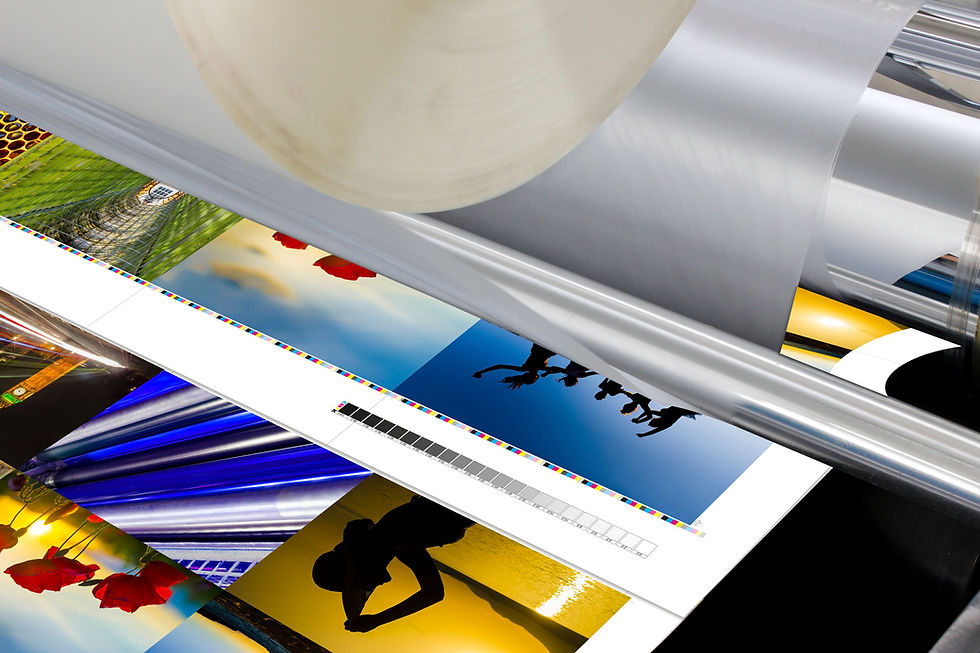Conquering the unseen challenges of inkjet
- steve8125
- Aug 22
- 3 min read
Inkjet technology has transformed the printing landscape in industrial applications, offering unmatched versatility and efficiency. However, as a multitude of industries adopt this technology for their diverse printing needs, they face several challenges that can affect performance and output quality.
Inkjet printing works by releasing fine droplets of ink onto various substrates, creating detailed images, text, barcodes and the like. This technology sees widespread use in numerous applications because of its ability to produce high quality prints, quickly and easily, at competitive prices. Its unique benefit of variable data inclusion and one off printing also makes it ideal for a number of applications which cannot be achieved cost effectively with other technologies.
The technology is easy to use and often benefits from a quick return on investment. Therefore, the trend for more brand owners and manufacturers to bring inkjet in-house is growing. Whilst professional print companies may make the move with ease, general manufacturers may find transitioning from traditional methods to inkjet can lead to several obstacles requiring careful attention, especially if printing is not their core competence.
One of the biggest hurdles in industrial inkjet printing to take into consideration is ink compatibility – yet this could also be said to be true for other printing processes. You always need to ensure that materials are fit for purpose.
Different substrates need specific ink types to achieve optimal adhesion and durability, and whilst inkjet can print on a wide variety of materials, it is something worth considering when making the change. For example, when printing on plastic, manufacturers often use solvent based inks, while water based inks are preferred for paper. Studies show that nearly 30% of printing failures can be traced back to ink incompatibility. Poor adhesion can result in issues like fading or complete print failure.
Regular testing and quality control are essential to ensure that the inks used fit the intended surface. For instance, using inkjet inks designed specifically for polyolefin substrates can improve adhesion significantly.
Another significant challenge inherent in inkjet technology involves printhead maintenance. The printhead is the core component of inkjet printers, and its performance has a major influence on print quality. Common problems include clogging, often resulting from dried ink or leftover particles.
To minimise these problems, companies should implement routine maintenance practices – like regular cleaning cycles and utilising high quality inks – which reduce the risk. Investing in advanced printhead technology can also enhance reliability and decrease downtime, leading to productivity increases, so ask the question at time of machine purchase. Make sure that the incorporated inkjet printheads are up to scratch – and find out what benefits they offer, because they can differ greatly.

In the industrial printing arena, businesses often face a dilemma regarding speed and quality. Inkjet technology is capable of creating high quality prints, but achieving this at extremely high speeds can be challenging. Yet recent developments in technology is improving this dramatically.
Companies must strive for a balance that satisfies both production efficiency and quality standards. For instance, tweaking print settings such as resolution and ink density can optimise results. Advanced technologies – like multi-pass printing and improved drying systems – have made it easier to enhance speed without compromising quality.
As industries become more environmentally aware, the environmental impact of inkjet printing is increasingly under scrutiny. Many inks contain volatile organic compounds (VOCs) that can harm both health and the environment – but again, this can be said for any technology, not just inkjet.
Depending on the substrate on which you are printing, inkjet can also be harder to deink if recycled, although the machine, inks and printhead manufacturers have been working hard to help redress this problem.
To combat this issue, manufacturers are turning to eco friendly inks with no harmful chemicals. Additionally, implementing sustainability measures – such as recycling and reducing waste, an inherent benefit with digital print – helps lower the environmental footprint of inkjet printing. Simple steps, like reusing ink cartridges, can also contribute significantly to waste reduction efforts.
To navigate this challenge effectively, businesses should perform in-depth cost analyses before investing in inkjet technology. Evaluating the total cost of ownership is crucial and should include not just the initial purchase price but also factors like maintenance, ink consumption, and potential downtime. Knowledge about these long term costs can lead companies to make informed decisions that fit within their budgets.
Inkjet technology has significantly changed industrial printing, delivering benefits in quality and efficiency. However, challenges regarding ink compatibility, printhead maintenance, the speed versus quality dilemma, environmental impact, cost management, and workforce training must be addressed.
By taking proactive steps to confront these challenges, manufacturing businesses can fully leverage inkjet technology's full potential, ensuring competitiveness in a rapidly evolving market. Embracing new advancements and remaining adaptable will be essential in navigating the unseen challenges in the coming years.






Comments